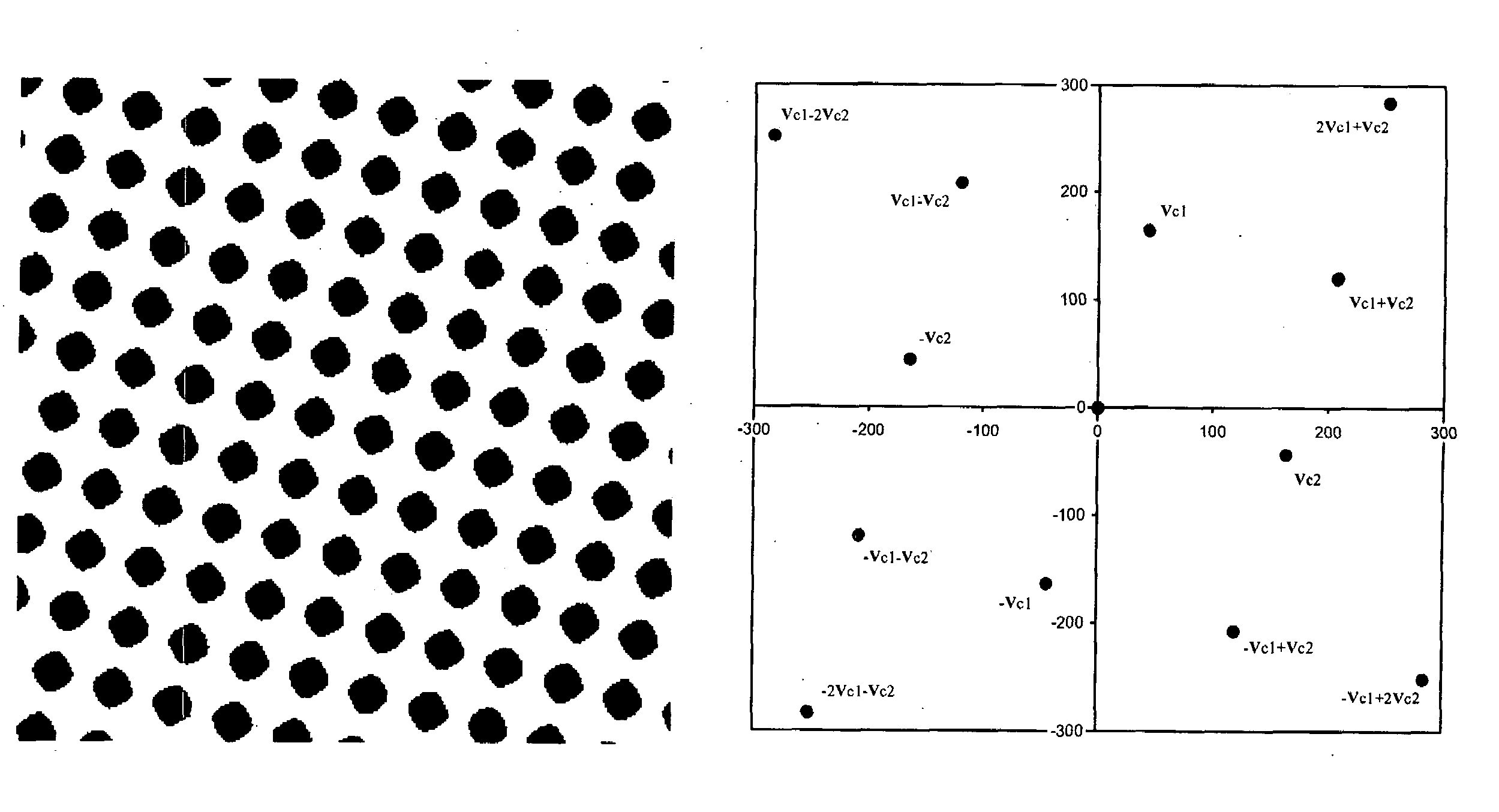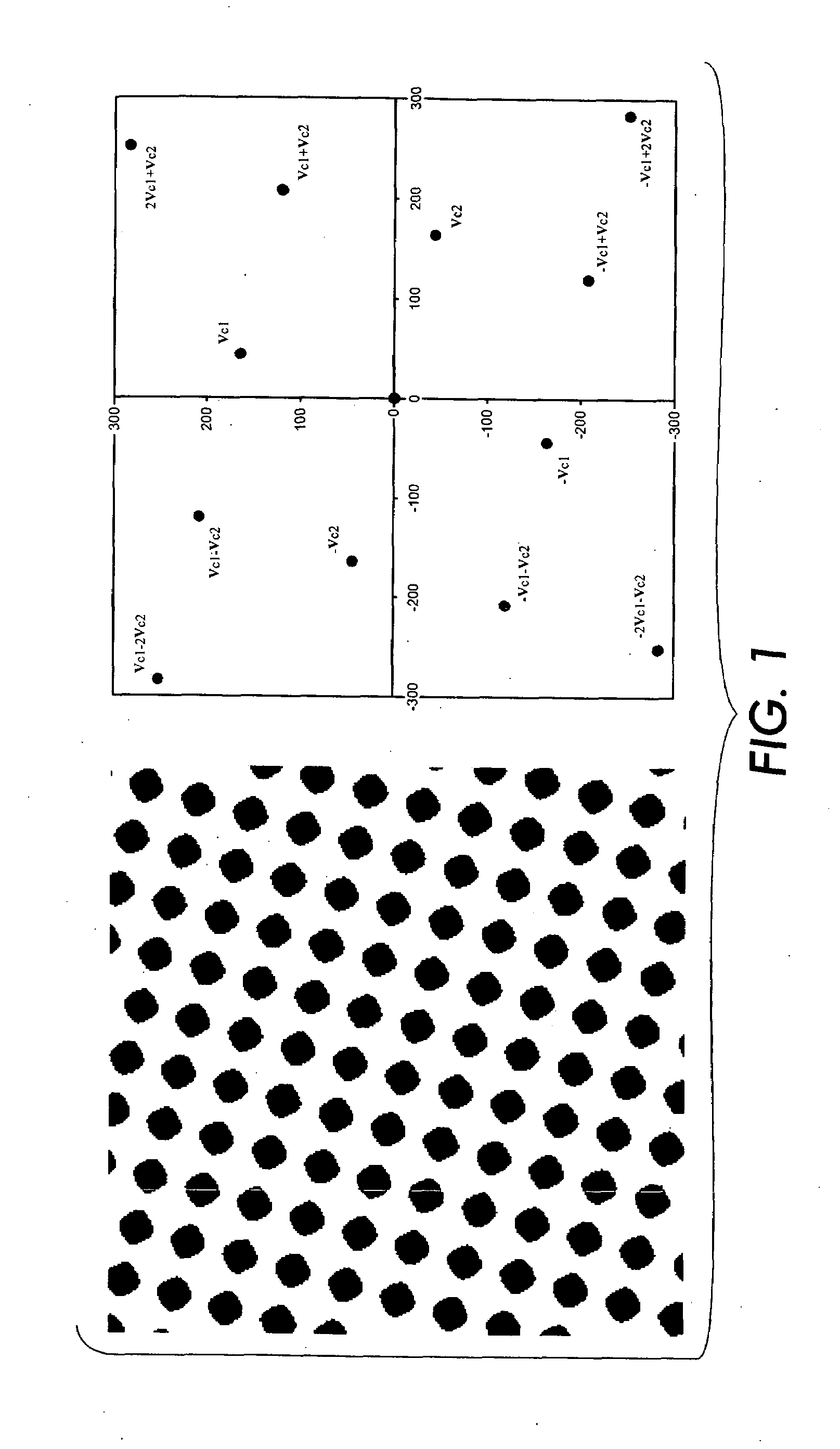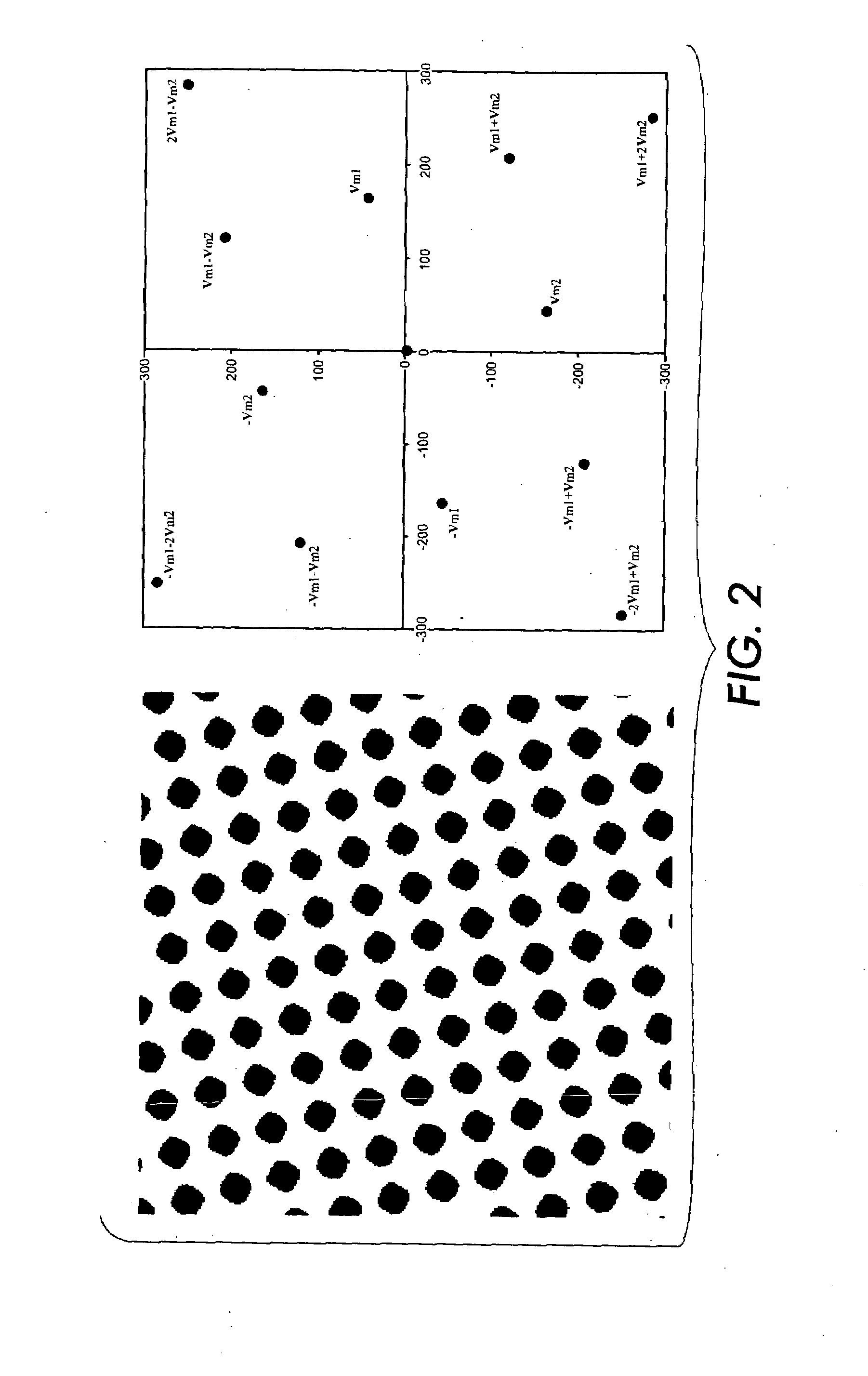N-color printing with hexagonal rosettes
a technology of hexagonal rosettes and color printing, applied in the field of n-color printing with hexagonal rosettes, can solve the problems of limited freedom to rotate a halftone screen, undesirable interference patterns of moiré patterns, and digital color halftones that manifest moiré patterns, etc., and achieve enhanced printing applications and enhanced halftone configuration.
- Summary
- Abstract
- Description
- Claims
- Application Information
AI Technical Summary
Benefits of technology
Problems solved by technology
Method used
Image
Examples
Embodiment Construction
[0049]The teachings disclosed herein provide an enhanced color halftone configuration that produces consistent hexagonal rosettes free of moiré when printing an arbitrary number of color halftone separations. With the non-orthogonal halftone screen technology thus developed it is possible to design clustered-dot halftone screens sets consisting of a relatively large number of screens, such as 5 or more, which generate halftone outputs with rosettes appearing as ordered hexagons of identical shape. The relatively large number of screens can be used for enhanced printing applications, such as printing with high-fidelity colorants, light colorants, or special colorants, such as white, metallics and fluorescents. The hexagon rosettes have fundamental spatial frequencies that define a frequency lattice from which fundamental frequencies of the halftone screens can be selected. As a result, the halftone outputs are truly moiré-free, because there is no frequency component, fundamental or ...
PUM
 Login to View More
Login to View More Abstract
Description
Claims
Application Information
 Login to View More
Login to View More - R&D
- Intellectual Property
- Life Sciences
- Materials
- Tech Scout
- Unparalleled Data Quality
- Higher Quality Content
- 60% Fewer Hallucinations
Browse by: Latest US Patents, China's latest patents, Technical Efficacy Thesaurus, Application Domain, Technology Topic, Popular Technical Reports.
© 2025 PatSnap. All rights reserved.Legal|Privacy policy|Modern Slavery Act Transparency Statement|Sitemap|About US| Contact US: help@patsnap.com



